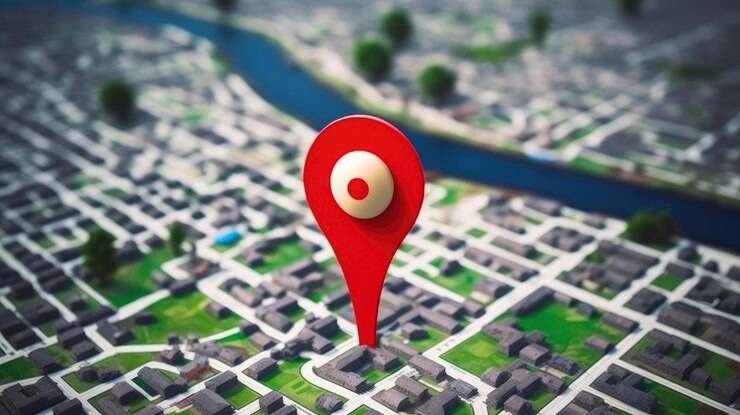Local maps optimization is essential for businesses aiming to enhance their visibility in local search results. By optimizing your presence on local maps, you can attract more customers in your area, ultimately boosting your business growth. In this blog, we’ll explore key strategies to help you improve local maps optimization effectively.
Understanding Local Maps Optimization:
Local maps optimization, also known as local SEO, focuses on increasing a business’s visibility in local search results. This practice involves optimizing your online presence to ensure that your business appears in local map listings, such as Google Maps, Bing Maps, and Apple Maps. When potential customers search for services or products near them, optimized local maps can make your business more discoverable.
Claim and Optimize Your Google My Business Listing:
One of the first steps in local maps optimization is claiming and verifying your Google My Business (GMB) listing. This free tool from Google allows you to manage how your business appears on Google Search and Maps. Here’s how to get started:
1. Claim Your Listing:
Go to Google My Business and search for your business. If it’s not listed, create a new listing. This step ensures that your business is recognized by Google and can be found by customers searching for services you offer.
2.Complete Your Profile:
Add accurate details such as your business name, address, phone number, website, and hours of operation. Make sure to fill out every section thoroughly. A complete profile provides more information to potential customers and can improve your ranking in local searches.
3.Verify Your Business:
Google will send a postcard with a verification code to your business address. Use this code to verify your listing. Verification adds credibility to your listing and enables you to access additional features, such as insights and reviews management.
Optimize Your Business Information:
Accurate and consistent information is crucial for local maps optimization. Make sure your business details are up-to-date and consistent across all online platforms. Inconsistencies in your business name, address, or phone number (NAP) can confuse search engines and potential customers. Here’s how to ensure accuracy:
1.Use Consistent NAP:
Ensure your business name, address, and phone number are identical across all online directories and your website. Consistency helps search engines associate your listings across the web, improving your local ranking.
2.Add Relevant Categories:
Choose the most relevant categories for your business to help search engines understand what you offer. Selecting the right categories can make it easier for customers to find you when searching for specific services or products.
3.Include Keywords:
Use relevant keywords in your business description, services, and posts. For instance, if you own a bakery, include terms like “fresh bread,” “custom cakes,” and “baking classes.” Keywords help search engines match your business with relevant searches, increasing your visibility.
Encourage Customer Reviews
Customer reviews are a vital part of local maps optimization. Positive reviews not only enhance your business’s credibility but also improve your ranking on local maps. Here are some tips to encourage more reviews:
1.Ask Satisfied Customers:
Politely request reviews from customers who have had a positive experience with your business. A simple request can go a long way in encouraging customers to share their feedback.
2.Respond to Reviews:
Engage with reviewers by responding to their feedback, whether it’s positive or negative. This interaction shows that you value customer opinions and are committed to providing excellent service. Positive interactions can also encourage other customers to leave reviews.
3.Make It Easy:
Provide a direct link to your review page to make the process as simple as possible for your customers. The easier it is to leave a review, the more likely customers will do so.
Optimize Your Website for Local SEO
Your website plays a crucial role in local maps optimization. Ensure that your site is optimized for local search to improve your chances of appearing in local map results. Here’s how:
1.Use Local Keywords:
Incorporate location-based keywords throughout your website content, meta tags, and image alt texts. Keywords such as “best pizza in [city]” or “plumber near [location]” can help attract local search traffic.
2.Create Local Content:
Write blog posts, articles, or landing pages focusing on local events, news, or topics relevant to your community. Local content can attract visitors who are interested in your area, increasing your chances of being discovered by potential customers.
3.Optimize for Mobile:
Ensure your website is mobile-friendly, as many local searches are conducted on mobile devices. A mobile-friendly site provides a better user experience and can improve your ranking in search results.
Build Local Citations and Backlinks
Building local citations and backlinks is another effective strategy for local maps optimization. Citations are online mentions of your business’s name, address, and phone number. Here’s what you can do:
1.List on Local Directories:
Submit your business to local online directories like Yelp, Yellow Pages, and Bing Places. Being listed in multiple directories increases your online presence and can improve your local search ranking.
2.Acquire Local Backlinks:
Seek backlinks from local websites, such as local newspapers, blogs, or community websites. This not only improves your SEO but also builds your local authority. High-quality backlinks from reputable local sites can significantly boost your credibility and visibility.
Use Local Schema Markup
Implementing local schema markup on your website helps search engines understand your business’s location and details better. Schema markup is a code that you add to your website to enhance its visibility in search results. Here’s how to use it:
1.Add Location Schema:
Include schema markup for your business’s address, phone number, and opening hours. This helps search engines display accurate information about your business in search results.
2.Use Organization Schema:
Use schema for your business’s name, logo, and other relevant details. This can improve how your business appears in search results and can provide additional information to potential customers.
Track and Analyze Your Performance
Regularly monitoring your local maps optimization efforts is crucial to gauge your performance and make necessary adjustments. Use tools like Google Analytics, Google Search Console, and local SEO tools to track your rankings, traffic, and customer engagement. This data will help you refine your strategies and improve your local maps presence over time.
Contact Us for Expert Assistance
Optimizing your local maps can be a daunting task, but with the right strategies and support, you can achieve significant results. At Be Found Next, we specialize in local maps optimization and can help your business increase its visibility and attract more local customers.
For more information or to get started, contact us today at 440-670-8100 or email us at info@befoundnext.com. Let’s take your business to the next level with effective local maps optimization!
Conclusion
Effective local maps optimization is vital for any business looking to enhance its local presence. By claiming and optimizing your Google My Business listing, encouraging customer reviews, optimizing your website, building local citations, and using schema markup, you can significantly boost your business’s visibility on local maps. Regular tracking and analysis will ensure your strategies remain effective and continue to drive growth.
Ready to boost your local presence? Contact Be Found Next today and let us help you dominate the local search results!

